How Calverts cooperative has helped form Bethnal Green’s riotous and artistic identity
Channelling the seditious energy of printers from the 1600s, Calverts printing cooperative has been putting the activism into Bethnal Green since its 70’s punk rock beginnings.
Calverts may be the last of its kind in the area, but the print trade’s radical roots reach deeply into the East End’s fabric. In fact, if anything could encapsulate the identity of Bethnal Green, Calverts might be a hot contender.
Calverts is a design and print cooperative, whose independence from corporate pressures allows for the increasingly rare autonomy to produce work that is subversive, socially progressive and crucially, beautiful.
It was founded in 1977 by a group of printers who had been made redundant from an arts organisation. With no redundancy package, they took control of the printing presses to kickstart their own venture.
Arthur, one of Calvert’s 12 members, reminisces, ‘This was the days of Ken Livingstone’s GLC, of punk rock and a kind of DIY attitude in the air. It was around the time I moved into Sanford coop in New Cross. It was cheap and we didn’t have a landlord – it was brilliant’.
The original founders ruminated about their future over pints in the North Star pub, like all good revolutionaries.
A few centuries earlier in 1769, the Bold Defiance (silkweavers who organised a revolt against their reduced wages owed to the mechanisation of their trade) similarly plotted in The Dolphin pub, formerly on Redchurch Street. The pub has been repurposed as Labour & Wait, a shop which specialises in timeless utilitarian products.
This street was, perhaps prophetically, Calvert’s former home before its relocation to The Oval, thanks to rising rent. The Bold Defiance’s rebellion changed the course of workers’ rights forever.
Paying homage to Elizabeth and Giles Calvert – radical printers of the 1600s and the Civil War, whose literature was so scandalous it was punishable by execution – they landed on the galvanising namesake, Calverts Northstar Press.
The power of print
Print and design have long been part of the East End’s arsenal to successful activism, and it is one of the reasons why creatives and agitators flock here.
‘Good design should be invisible. It should be able to carry the message without interfering with it. Something that isn’t glaringly artful – something simple, but eye catching, that just works. It’s something that you feel as much as you think’, says Arthur. It even sounds ethereal.
Design’s capacity to communicate and evoke strong responses, combined with the technology to reach far away audiences is nothing short of magic.
Is it possible to imagine the legacy of the civil rights movement, the suffragettes or more recently BLM and Extinction Rebellion without the good communicative imaging that roused us to the streets? Without it, who would know about these revolutionaries, and who would be inspired to join them?
With its artistry and mutinous proclivity, Bethnal Green seems to trade in starter packs for social change, having for instance pioneered the first social housing scheme built by a local government authority in 1890, Arnold Circus.
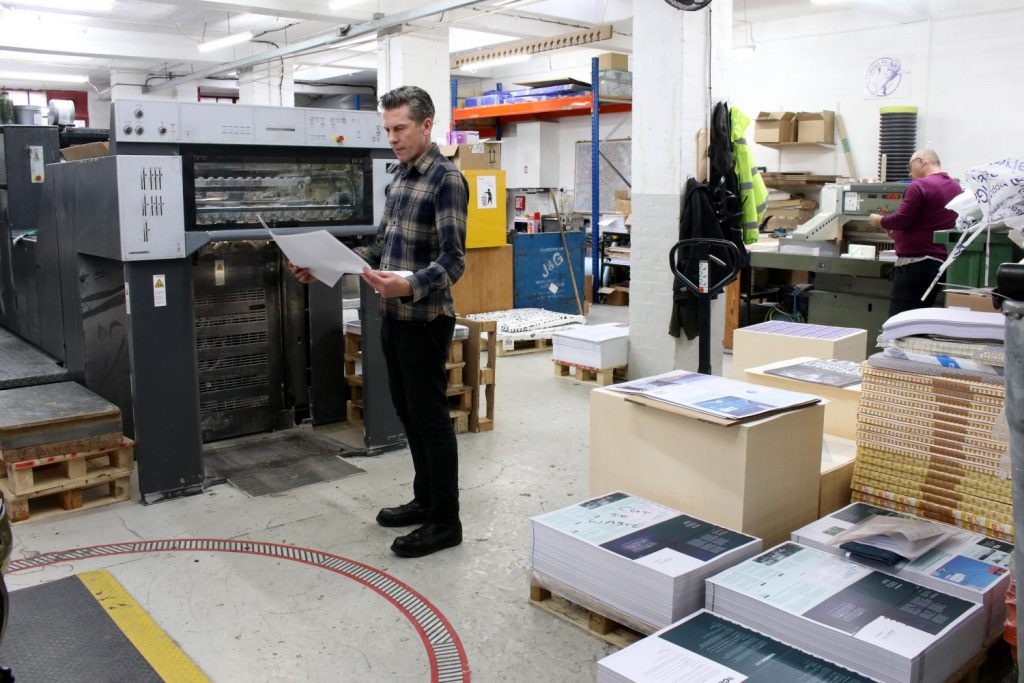
Power to the people
The success of social campaigns is often linked to how well they are embedded in the areas they seek to serve. The proximity of the printing house to the creatives they work with is significant.
‘It’s important that we work closely with our clients, so that we can collaborate all the way from an initial concept, to its design, documenting its progression on social media, and even arranging distribution to customers and beneficiaries. Creators can anticipate what their end product will be, rather than taking a (financial) leap of faith.’
The beauty of print is its tactility, and is its primary differentiator from the digital world.
‘Print is as much about texture and smell, as it is what you can see. It’s about how a material feels in your hand, and the sound of pages between your fingers. You can’t express that through Zoom.’
Being located in the heart of East London means they are best placed to serve the community of which they are an intrinsic part, and in an environmentally efficient way.
‘We currently have a cargo bike to distribute things locally. But this is also about social sustainability. Soon the high street will disappear, we have to support businesses to work in the long term.’
The Calvert printing room is like a laboratory of endless possibilities. Colourful inks dropped in from above, the machine gurgles and splutters as paper is fed in one end and artwork shoots out the other.
The printer is enormous, requiring a lot of space – an ever increasing luxury. But it affords the cooperative the capacity to make bigger, more diverse and experimental works, and to create the interesting and beautiful objects that keep them in business.
Some of these works include The Right to Remain asylum navigation board game, which helps users understand how to navigate the very cumbersome asylum process; a map of contested development sites in Tower Hamlets; the East End Trades Guild map of independent businesses (image below); or local artist Jam Sutton’s augmented reality art postcards (also see below).
The demand for printing is on the up. ‘People became so dissociated from tangible things during the pandemic, as everything went online. We’ve all been reinvigorated by really experiencing things again. Sure, marketing online is the future, but you can only do so much.
We have paper that is made from seaweed, and special inks that are invisible until under certain lights. You can do really interesting things that differentiate what it is you do. There’s only so much you can do between one PDF and another’.
Keeping the fire alight Arthur chimes, ‘I love this area because of its interesting people. There’s a unique energy that creative people bring, striving for change and newness. This is not Kensington or Central London – it still has an underground grittiness’.
But despite the changes this locale has undergone, its stalwarts are steadfast. ‘For lunch I go to Steve’s Canteen, just on the corner there. It’s been here as long as us. Or Billy’s cafe, or Pelliccis. We might go to The Hare pub, or grab a drink at Ombra.’
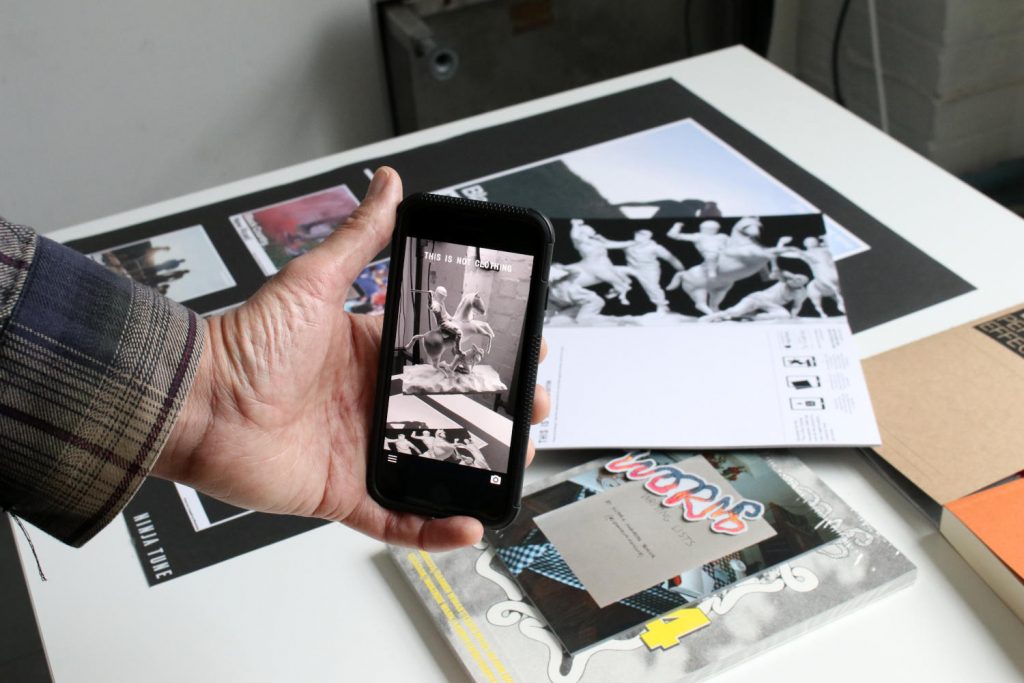
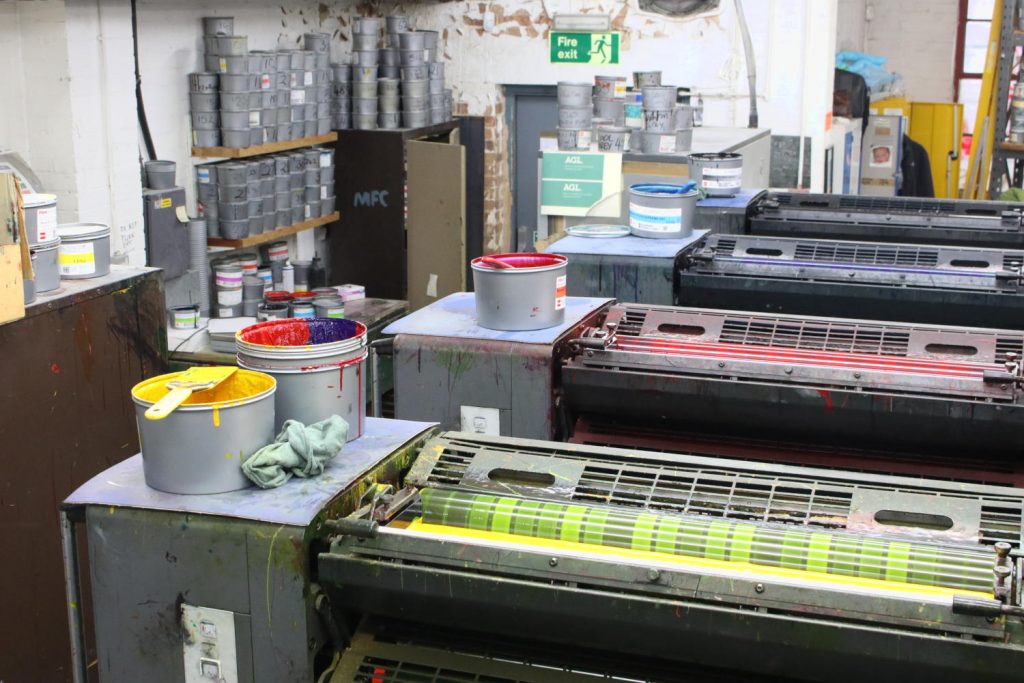
The collective power of cooperatives
It’s not only space and its location that sets Calverts apart. It’s a co-operative, meaning its 12 members own and control the company jointly and equitably: one vote per member. And even more radically, everyone is on the same hourly wage – from the cleaners to the head of finance.
‘We don’t have a boss so we make all our decisions collectively. It may take a little longer but they tend to be right, because you’ve probably given them more consideration than one person. It might mean we’re a bit more resistant to making quick decisions but we’re still here after 45 years.’
What does this mean in practice? ‘We’re not ‘not for profit’, but we’re not just for profit. So together we decide how that profit will be used, so it’s not concentrated in the pockets of shareholders or tax havens. We can invest in new kit and new processes. Or work with organisations that can’t otherwise afford it.’
It frees Calverts to choose who they work with, and who they don’t. ‘For instance, we turned down work with a fracking company called Cuadrilla Resources. We have autonomy to produce things that are socially progressive and actually make a difference in society.
In traditional ‘us’ versus ‘them’ hierarchical workplaces, people need someone to kick back against. You don’t get that here, because we’ve all been complicit in a decision. It’s a nicer as well as more business savvy way of working.’
The current political climate may not be so conducive to this practice, but Arthur is optimistic that it will return. As the likes of the East End Trades Guild shows – an alliance of independent businesses that Calverts is part of – collective action has power and models a successful, alternative way of being and working.
Sustaining the spirit
Arthur shares some practical words of wisdom: ‘apart from casting a vote every four years, the one thing we can all do is be deliberate as to how we spend our money’.
Just as Calverts has enabled local businesses and movements to flourish, we must nurture their longevity. Calverts tenancy is under threat again and they are in current negotiations with their landlord who recently hiked the rent to double.
If Calverts’ doesn’t inspire you to give a figurative finger up to your landlord to start your own cooperative, or to make that zine you’ve always dreamt about, then let’s at least channel their spirit and ask, how can we better vote with our money?
In doing so we may commit to a more socially conscious and sustainable future, that keeps Bethnal Green’s punk energy alive and kicking.
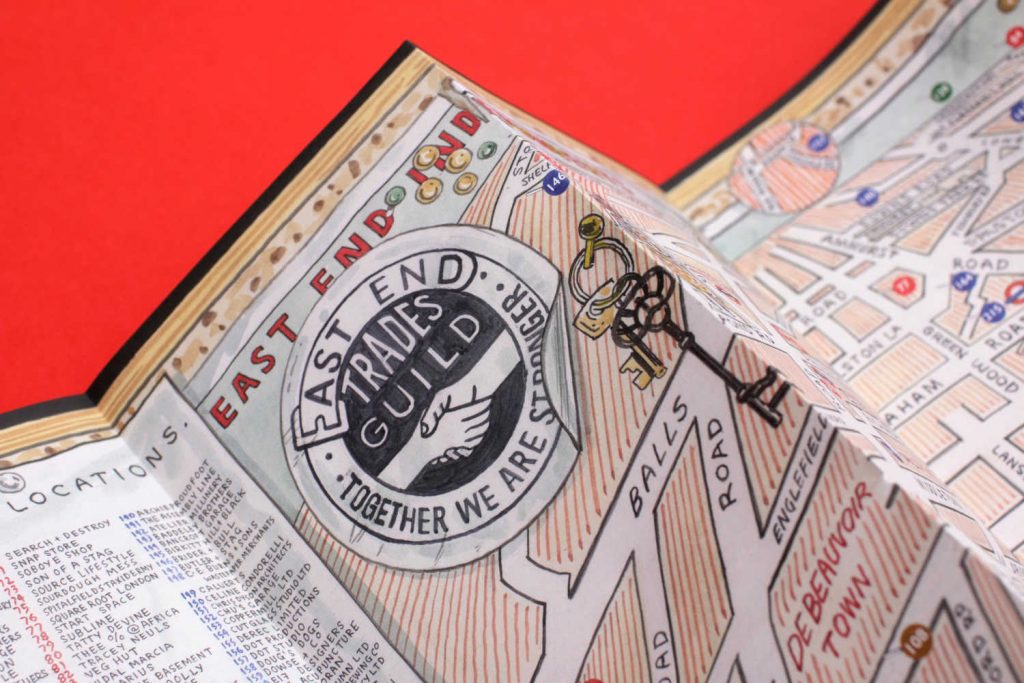
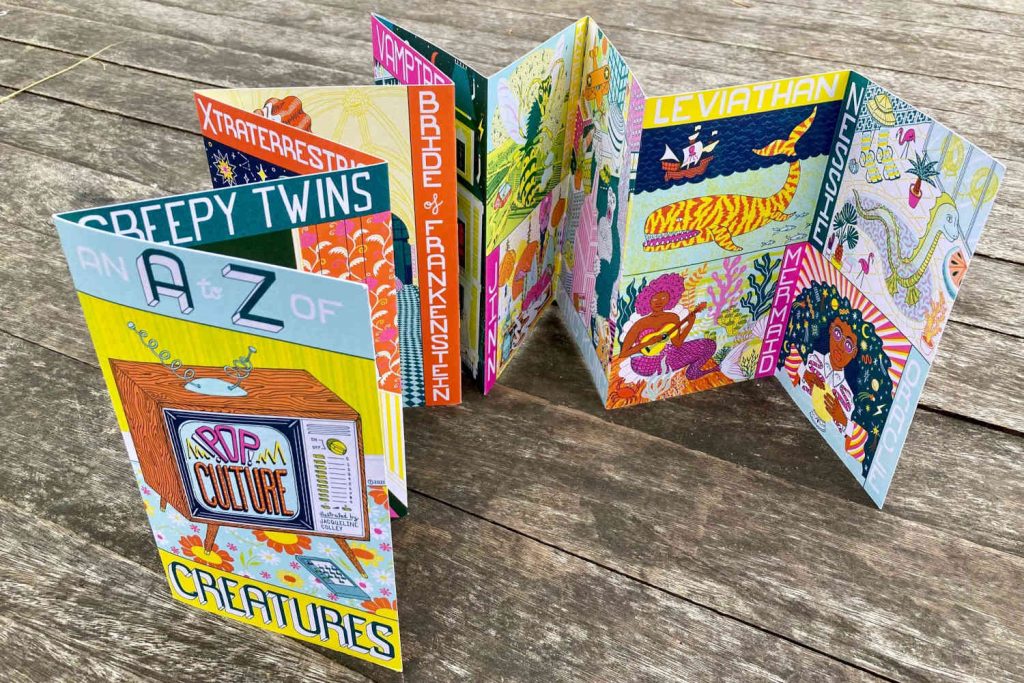
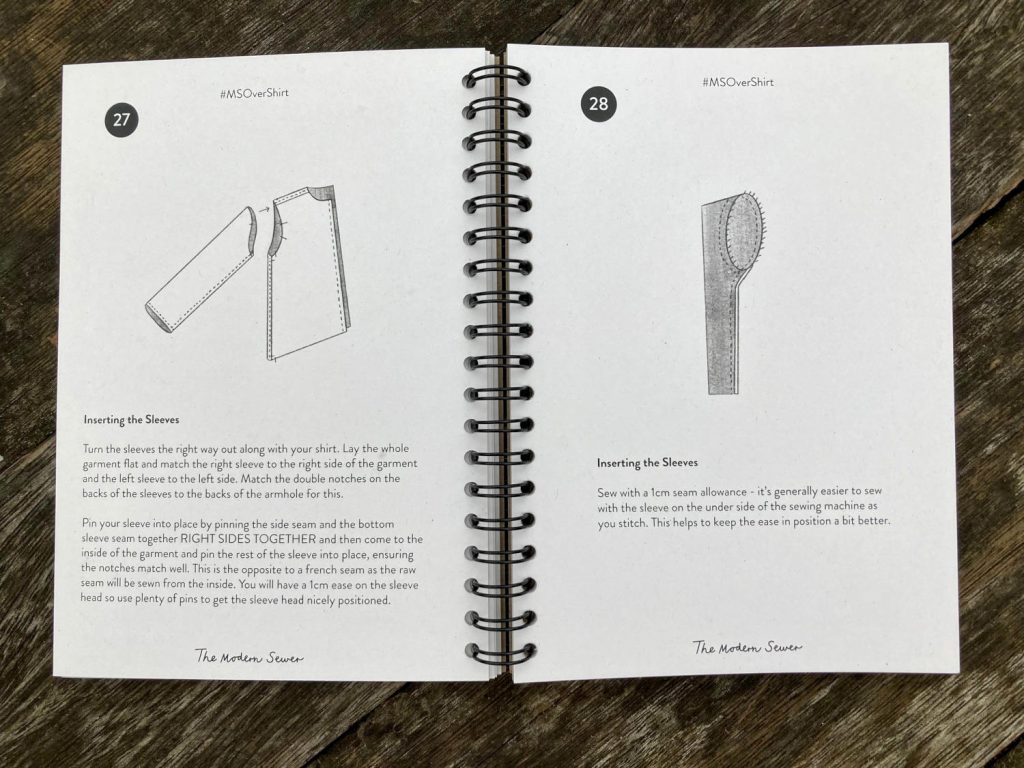
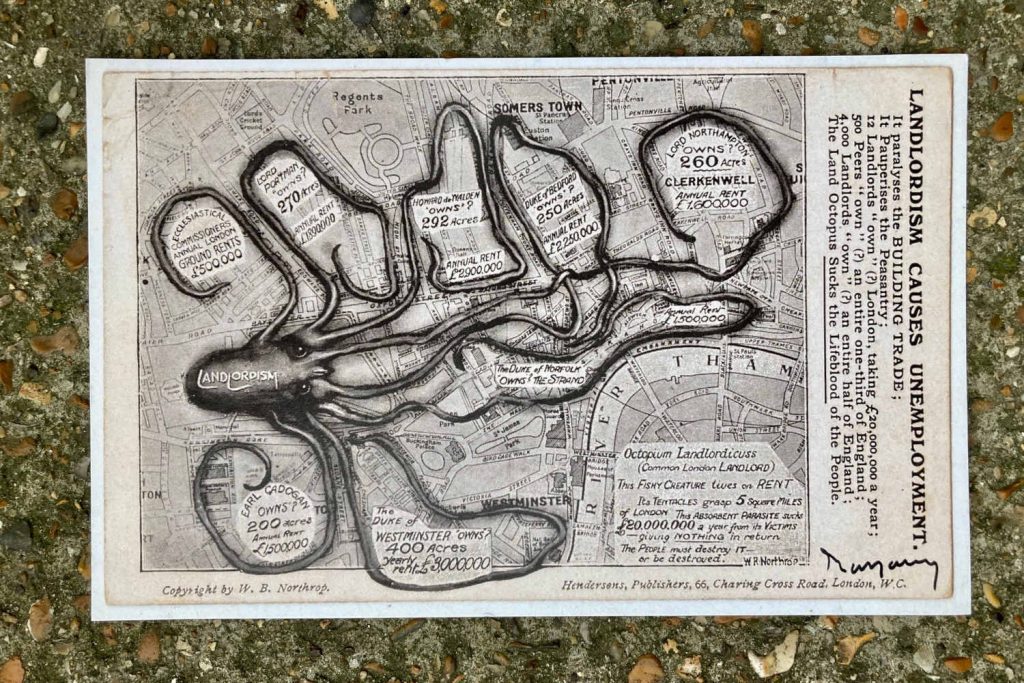

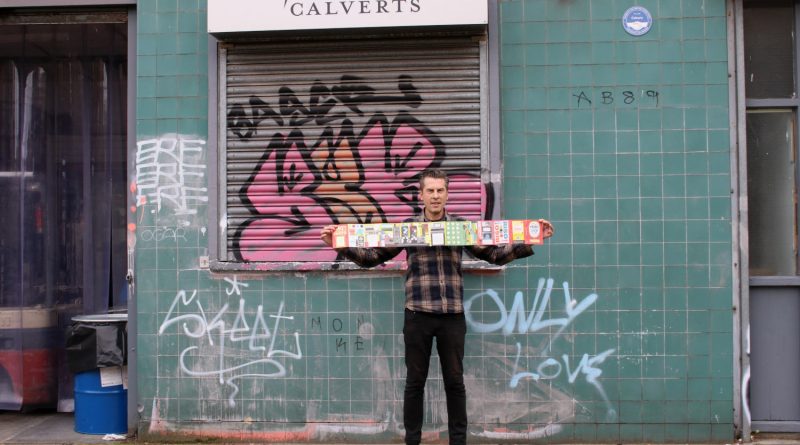
Good writing!
Hello there,
Interesting article. However, every good story has many layers.
This account, too, has a precedent going back to 1969 when two naive visionaries registered Millennium Press as a partnership. This event itself had a precedent called Mondcivitan Printing service
(see Mondcivitan Republic https://en.wikipedia.org/wiki/Commonwealth_of_World_Citizens ) .
But this is a long story in itself…